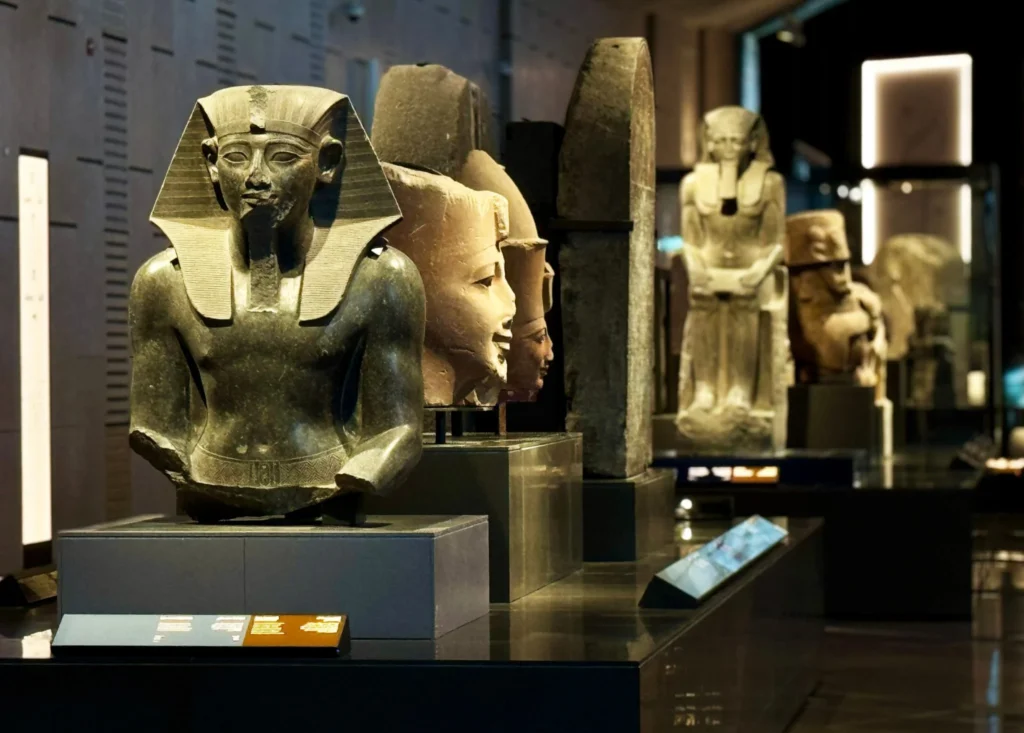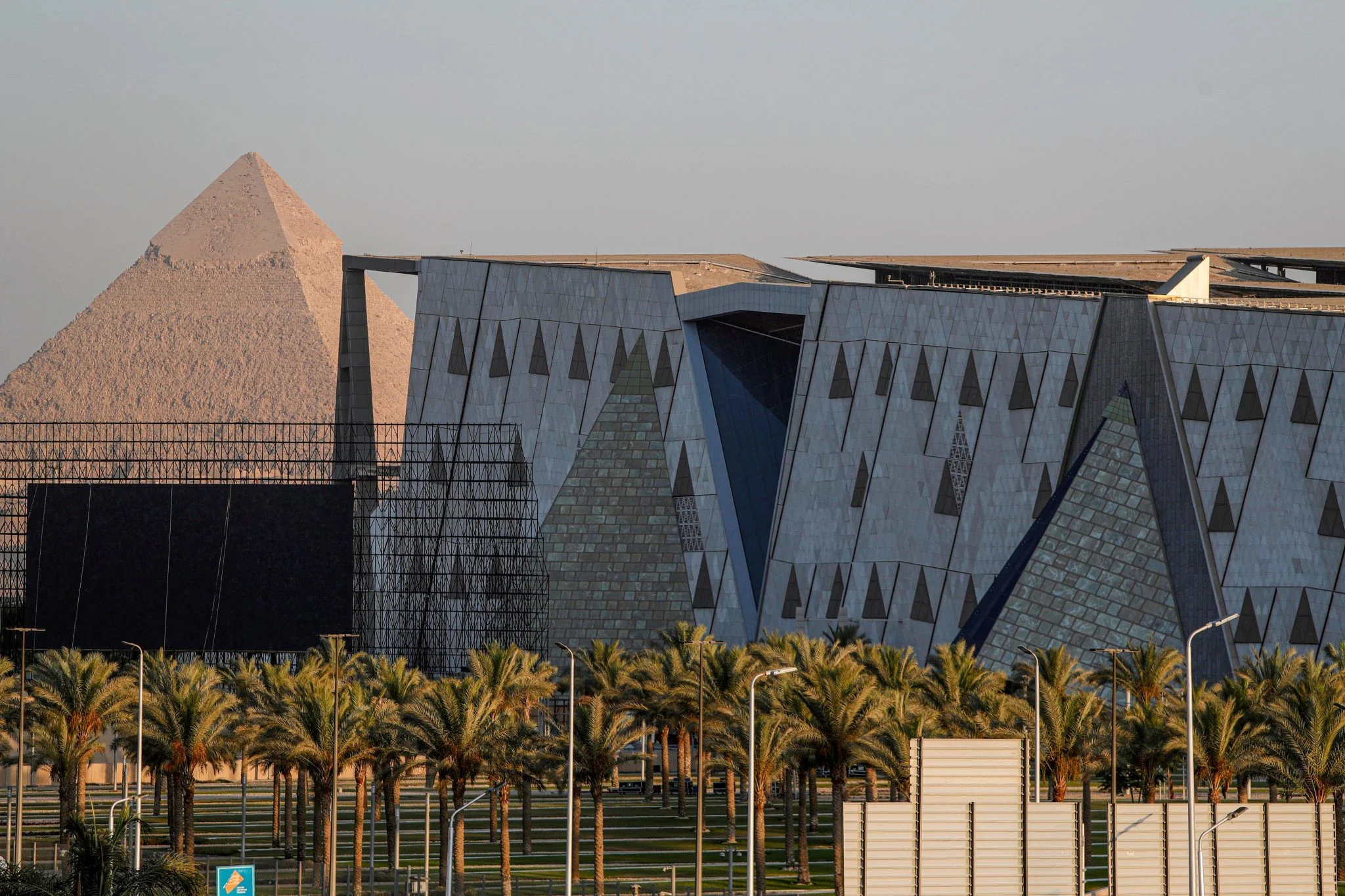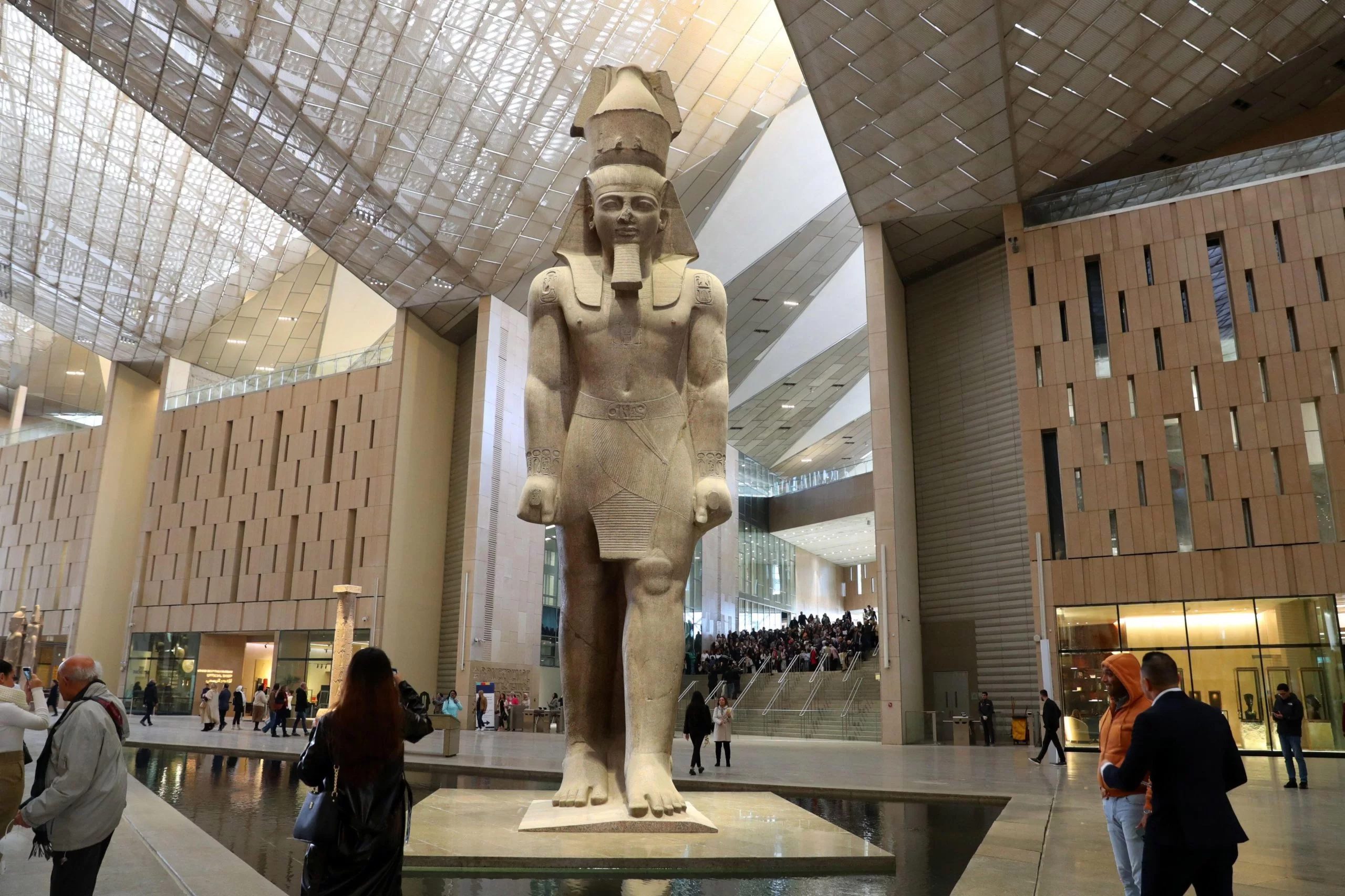The Grand Egyptian Museum (GEM), whose foundations were laid approximately 30 years ago, has finally begun welcoming visitors after a long wait. Built at the foot of the Giza Plateau with an architectural style parallel to the grandeur of the pyramids, this massive museum not only displays Egypt’s archaeological heritage but also stands out as a milestone that reimagines the country’s cultural memory. Housing a total of 50,000 artifacts, the GEM brings together 5,398 artifacts from Tutankhamun’s tomb for the first time, offering an unprecedented unity in world museology.
The opening date is as significant as the collection itself: the museum opened on November 4, the day Howard Carter discovered the steps leading to Tutankhamun’s tomb in 1922. After decades of delays, ranging from economic crises to pandemics, regional conflicts to political uncertainty, the GEM has opened its doors, transforming into a monumental project that redefines Egypt’s cultural prestige. The 11-meter statue of Ramses II that greets visitors as soon as they step inside offers the first clue to this claim: GEM is not just a museum, but a comprehensive cultural complex where an ancient civilization is retold to the modern world.

Egypt’s Modern Architectural Showcase
The Dublin-based architectural project by Heneghan Peng leans the building against the natural elevation of the Giza plateau, giving visitors the feeling of climbing into the past. The massive entrance area, clad in alabaster stone, evokes ancient rituals. However, this vastness is so expansive that it sometimes creates an airport-like atmosphere; even the monumental statue of Ramses II can appear like an ordinary piece within this enormous space.
However, the museum’s imposing aspects emerge when stepping into the galleries. Artifacts spanning Ancient Egypt’s 3,000-year written history and thousands of years of pre-dynastic periods are presented for the first time in such an organized, readable, and contemporary narrative. Twelve main galleries take visitors either on a chronological journey or around themes central to Egyptian society: belief, power, and daily life.

All of Tutankhamun’s Treasures Together for the First Time
GEM’s greatest promise is undoubtedly the Tutankhamun collection. All 5,398 objects excavated from the tomb opened by Howard Carter in 1922 are being displayed under one roof and in the same arrangement for the first time in history. It is not the weight or value of the gold that captivates, but their human aspects: the young king’s linen undergarments, the olive and lotus wreaths placed on his body, the reed cane inscribed with “His Majesty chose and cut it with his own hands,” or the amphorae stamped with the producer’s name and inscribed with “very good red wine”…
The lighting of the galleries, the labeling language, and the rhythmically arranged layout of the artifacts do not merely make the visitor a spectator; they establish a direct, almost tactile connection with Tutankhamun’s world. This section stands out as an example of the technical and emotional refinement achieved by modern museology.
A New Center for Egypt’s Cultural Memory
GEM is not just a place that tells the story of the past; it is also a major investment in Egypt’s cultural and economic future. Expected to welcome 5 million visitors a year, the museum has been transformed into a cultural campus with conference centers, a library, a children’s museum, educational areas, restaurants, and shops. The opening resonated widely not only in Egypt but around the world; heads of state and cultural representatives attended the ceremony, which they described as “one of the most important moments in human history.”
Nevertheless, despite the GEM’s size, some iconic artifacts are still housed in museums around the world. The absence of the Rosetta Stone, the Dendera Zodiac at the Louvre, and the Nefertiti Bust in Berlin has reignited international repatriation debates.






